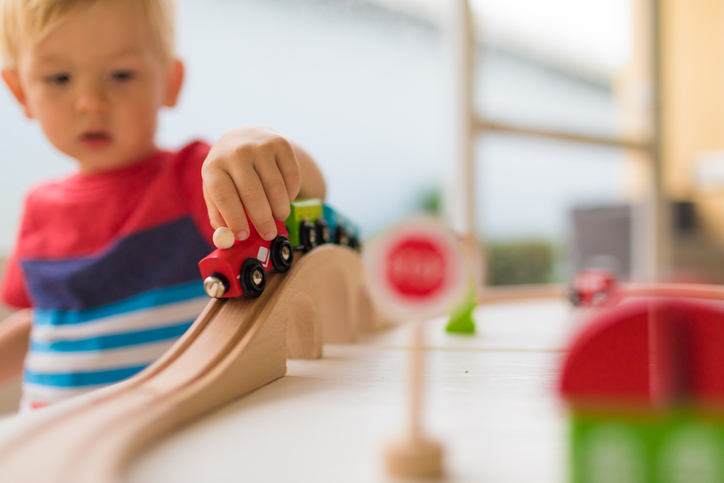The Listening Project: Fostering Connection in Boys’ Schools

The Listening Project was founded at a single-sex middle school for boys of color in New York City. It is a school-based intervention designed to address how a “crisis of connection” in American society has impacted middle school cultures. In particular, the project focuses on how race and gender stereotypes influence the ways in which students and their teachers relate to each other and seeks to break down the stereotypes associated with boys of color from, in particular, low-income backgrounds.
Evidence of this crisis of connection is widespread across our communities, from high rates of isolation, alienation, loneliness, and suicide to low rates of empathy, belonging, and overall well-being. In American middle schools, such a crisis is evidenced by high rates of in-school and out-of-school suspensions, detentions, bullying and harassment, and discrimination among peers and school adults. At the root of this crisis is a set of dehumanizing stereotypes. For boys of color specifically, stereotypes perpetuated in the popular media include aggression, a disinterest in formal education, and a preoccupation with girls and sex.
Especially during the middle school years, pervasive stereotypes dampen our natural curiosity about each other, and impair our ability to build healthy learning communities for all students. The Listening Project defines curiosity at the interpersonal level, whereby students and teachers develop genuine interest in one another beyond a set of stereotypes. Connection is defined at the relational level, whereby students and teachers develop positive relationships through being “fully seen” by each other, and not limited by stereotypes. The fundamental goal of this project is to facilitate community-building among students, teachers, and parents, all through connected relationships.
The Science of Human Connection
In the spring of 2021, I led a workshop for parents at a New York City independent school—it focused on how the crisis especially plays out in middle schools and included an overview of the research that informed the project’s design. Niobe Way, a developmental psychologist and my Listening Project co-founder, and I refer to this literature as the “science of human connection”. It is an interdisciplinary body of research from the social sciences, natural science, and the arts and humanities. Its insights tell a story about the roots of the crisis of connection, the consequences, and what can be done to counteract it—evidence-based solutions implemented in schools and communities.
First, this story begins with who we are as humans. We are fundamentally social beings, with a capacity and desire and need for community through relationships. We need social connection. Such an insight is counter to a popular American ideal that our advancement as a society is best served by staunch individualism, competition, and survival of the fittest. In contrast, our society and our survival as a human species is more correlated with our efforts at altruism and cooperation, bolstered by our desire to live in relationships.
Second, there is a longstanding conflict between what we understand as our human nature, and what has become mainstream American culture. Embracing stereotypes—or failing to dispel them—has led us to become a white supremacist and patriarchal society that privileges Eurocentric and Western norms and beliefs, in addition to culturally masculine qualities, traits, and characteristics over and above those considered feminine. We are a society that racializes and genders behaviors that are fundamentally human.
Thirdly, the science of human connection provides evidence for the crisis of connection in American society and middle schools specifically. It is the high rates of isolation, loneliness, and alienation previously mentioned, alongside low rates of empathy and well-being.
The fourth part delineates the consequences associated with allowing the crisis of connection to persist, and what doing so will mean for our natural curiosity and ability to connect to others through genuine relationships. The consequences being our prominent social problems in the U.S.—namely racism, poverty, homophobia, sexism, and xenophobia, to name a few.
Lastly, this science of human connection can inform potential solutions, both school-based and community-based. What does this body of science mean for middle school students and teachers? While they naturally want to be connected to each other, and have the skills to do so, they often find themselves in learning environments where race and gender stereotypes may discourage the very qualities that make it possible—namely curiosity and listening.
The Listening Project defines listening as active rather than passive, whereby students and teachers ask questions of each other from a place of curiosity, rather than to prove or disprove a stereotype. A larger premise of the project is that education should aim to foster our human potential to deeply engage with each other and the world. By doing so, we cultivate vibrant, strong, and connected communities. The project strives to cultivate active listening, curiosity, connection, and community by valuing and supporting these human qualities, and embedding them into a core academic curriculum—language arts and humanities.
The Pilot Study
Implemented in a language arts class at a single-sex middle school for low-income boys of color, a three-year pilot study (2015–2018) informed the design of The Listening Project. The school was selected as boys of color are over-represented in the middle school outcomes associated with the crisis of connection. It was therefore considered a promising setting to develop a robust intervention to address the crisis, with implications for other populations of middle school students.
The five phases of the project were informed by in-depth interviews with three cohorts of seventh-grade boys (i.e., a key middle school year)—123 students in total—and a similar number of classroom observation hours. Over the course of 14 sessions (now 20 sessions in total), during a period of four and six weeks, boys and their teachers were trained in transformative interviewing— learning how to listen to each other and ask genuine questions. The process is transformative because it reveals to the participants their astute capacities to see each other beyond stereotypes, promotes connection between students, and creates a pathway to building positive school and classroom communities. Alongside teaching interviewing skills—open-ended questions, capturing meaningful narratives, asking follow-up questions—instructional strategies throughout each phase included mini-lecture, “Think-Pair-Share,” video clip screenings, peer-to-peer and student-adult feedback, and whole-group and small-group discussions.
Phase One—Why The Listening Project?—consisted of engaging boys around the crisis of connection in middle schools, particularly as it relates to race and gender stereotypes associated with boys and men of color in the United States (i.e., hyper-aggression, anti-intellectualism, and hyper-sexuality). For example, boys screened the documentary, “The Mask You Live In: American Masculinity,” and they watch the “Dangers of a Single Story” TEDTalk by Chimamanda Ngozi Adichie.
Phase Two—Practice Interviewing—entailed boys interviewing their classroom teacher, conducting a “stranger” interview with a Listening Project staff member, an “in-school” interview with school personnel, and lastly, boys interviewing each other. For each set of these interviews, boys developed and asked their own questions, rooted in their own curiosities. Boys interviewed their teachers to learn more about different aspects of those teachers’ lives. They interviewed a Listening Project staff member, someone relatively unknown to them, to foster their natural curiosity with all people in the world, not just people they know. The in-school interviews with a school staff person were conducted with a school adult who the boys typically passed everyday (i.e., security guard, kitchen aide), but with whom the students did not necessarily engage fully.
Collectively, these interviews prepared the boys for Phase Three—The Focal Interview. For this main interview of the project, boys were asked to select a family member who they would like to interview—someone they love, and someone they would like to get to know better (dads were often selected, along with distant grandparents, and older siblings). Here too, they developed their own questions, and conducted three separate interviews with the same family member to garner important details associated with what the project calls “Gold Nugget Stories”—stories that capture a life event that had a significant impact or shaped them into the person that they are today.
Phase Four—Biographical Essay—consisted of boys drafting short essays that were biographical in nature, featuring the “Gold Nugget Stories” culled over their three interviews with their family member. The Listening Project deems biographical essay-writing a rich expression of appreciation for being interviewed and sharing their intimate and vulnerable life experiences.
Finally, Phase Five—Student Presentations—comprised of a half-day celebration with parents and school staff being invited to the school-site, with food/beverage being served. Student presentations highlighted “Gold Nugget Stories” included in their essays and addressed how The Listening Project impacted their relationship with the family member interviewed (e.g., learned something new about them, see themselves in their family member). At the conclusion of these presentations, parents and school staff shared reflections on being interviewed, and how it helped them see the boys differently.
In commemoration of their participation in The Listening Project, the boys’ school published a literary magazine that featured some of the biographical essays written by boys.

An Expansion of The Listening Project
The Listening Project is currently being implemented and evaluated in 12 middle schools across three urban school districts—New York, Philadelphia, and Baltimore—with planned expansion, thanks to a federal grant, to a diverse cohort of middle schools. The 14 original sessions have been expanded to 20 sessions in total. Our hope is to provide a palpable solution to the crisis in middle schools for all students. It is intended to inspire middle school teachers, and other school professionals, to implement their own versions of The Listening Project. The goal is to nourish students’ natural curiosities beyond stereotypes, and their natural capacity and desire to build connected relationships and inclusive communities.
When schools focus on building caring and connected communities, learning and achievement flourish. For example, the Promise Academy schools associated with the Harlem Children’s Zone in New York are remarkable education models that deliberately cultivate a caring climate to build positive relationships among students, teachers, and parents, and they do so in ways that challenge dehumanizing stereotypes. Research has found that such caring schools effectively address the racial and gender achievement gap. Further research has also found that in schools that explicitly nurture curiosity—not only in academics, but also in the people around them—students are more engaged and perform better than those in schools where such qualities are not actively cultivated.
Overall, The Listening Project reimagines students and teachers in middle schools as humans who can significantly contribute to cultivating an equitable education system for the 21st century. It also reimagines middle schools and education more generally: Rather than a school being a place fixated on systemic practices and policies that stymie curiosity—such as test-taking and harsh discipline—this project reimagines it as a place of active curiosity and connection. A place where misplaced and inaccurate stereotypes have no role, and in which students and adults are better equipped to build supportive communities and contribute to a more equitable world.
Works Cited
Bryk, Anthony S., and Barbara Schneider. Trust in Schools: A Key Resource for Improvement. The Russell Sage Foundation, 2002.
Cose, Ellis. The Envy of the World: On Being A Black Man in America. Washington Square Press, 2003.
Cunningham, Michael, and Leah Newkirk Meunier. “The Influence of Peer Experiences on Bravado Attitudes among African-American Males.” Adolescent Boys: Exploring Diverse Cultures of Boyhood, New York University Press, New York, NY, 2004, pp. 219–232.
Dobbie, Will, and Roland G. Fryer. “Are High-Quality Schools Enough to Increase Achievement among the Poor? Evidence from the Harlem Children’s Zone.” American Economic Journal: Applied Economics, vol. 3, no. 3, July 2011, pp. 158–187, https://doi.org/10.1257/app.3.3.158.
Erikson, Erik H. Identity: Youth and Crisis. W.W. Norton & Co., 1968.
Way, Niobe, and Joseph Derrick Nelson. “The Listening Project: Fostering Connection and Curiosity in Middle School Classrooms.” The Crisis of Connection: Roots, Consequences, and Solutions, New York University Press, New York, NY, 2018, pp. 274–298.
Resources
Brooks, David. The Second Mountain: A Quest for a Moral Life. Random House, 2019.
Brooks, David. The Social Animal: The Hidden Sources of Love, Character, and Achievement. Random House, 2011.
Duckworth, Angela. Grit: The Power of Passion and Perseverance. Simon & Schuster, 2016.
Edutopia, https://www.edutopia.org/.
Gilligan, Carol, and David A.J. Richards. Darkness Now Visible: Patriarchy’s Resurgence and Feminist Resistance. Cambridge University Press, 2018.
Gilligan, Carol, and Naomi Snider. Why Does Patriarchy Persist? Polity, 2018.
Hacker, Andrew. Two Nations: Black, White, Separate, Hostile, Unequal. Scribner, 1992.
Kieffer, Michael J., et al. “The Middle Grades Student Transitions Study: Navigating the Middle Grades and Preparing Students for High School Graduation.” NYU Steinhardt School of Culture, Education, and Human Development, The Research Alliance for New York City Schools, June 2011, https://steinhardt.nyu.edu/sites/default/files/2021-01/NavigatingMiddleGrades_2011.pdf.
“NAEP – 2015 Mathematics & Reading Assessments.” The Nation’s Report Card, 2015, https://www.nationsreportcard.gov/reading_math_2015/#reading?grade=4.
New York City Comptroller’s Office. The Suspension Spike: Changing the Discipline Culture in NYC’s Middle Schools, New York, 2013.
Noguera, Pedro A. “The Trouble with Black Boys: The Role and Influence of Environmental and Cultural Factors on the Academic Performance of African-American Males.” Urban Education, vol. 38, no. 4, 2003, pp. 431–459, https://doi.org/10.1177/0042085903038004005.
Stake, Robert E. The Art of Case Study Research. Sage Publications, 1995.
Yin, Robert K. Case Study Research: Design and Methods. Sage Publications, 2009.
Joseph Derrick Nelson, Ph.D., is an Associate Professor in the Department of Educational Studies at Swarthmore College, Chair of the Black Studies Program, and affiliated faculty in the Gender and Sexuality Studies Program. He is a Senior Research Fellow with the School Participatory Action Research Collaborative, a race and gender equity institute at the University of Pennsylvania. He is also the Co-founder and a Co-principal Investigator of The Listening Project: Fostering Curiosity and Connection in Middle Schools.
This article first appeared in the 2022 issue of the Parents League Review. Get the current issue of the Review free with a family membership. Or purchase it separately.











